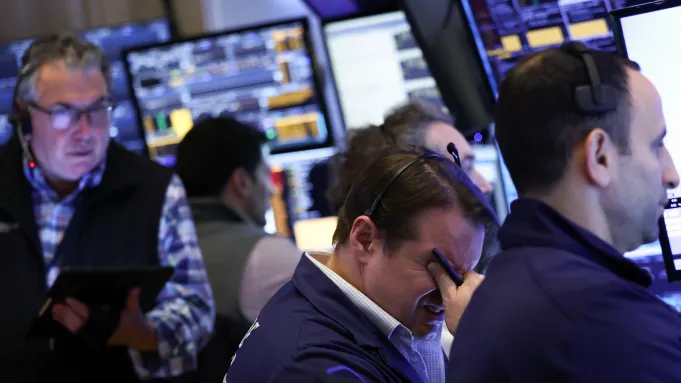World leaders are reacting with dismay, threats of countermeasures and calls for swift negotiations to make trade rules fairer in response to the sweeping new tariffs announced by U.S. President Donald Trump. But initial moves have been measured, suggesting key trading partners hope to avoid outright trade wars with the world’s biggest economy.
Asian markets fell in Thursday trading and U.S. futures tumbled, setting up what could be a brutal trading day in the U.S. as investors brace for the economic shocks.
Trump said in his “Liberation Day” announcement that the import taxes, ranging from 10% to 49%, would do to U.S. trading partners what they have long done to the U.S., and draw factories and jobs back to the United States.
European Commission President Ursula von der Leyen said they are a “major blow to the world economy,” while Japanese Prime Minister Shigeru Ishiba said they will have a “great impact” on U.S.-Japan relations and Korean Prime Minister Han Duck-soo called for emergency measures to support industries affected by the tariffs.
Now, markets are signaling profound pessimism about the policies of a president who regained office promising immediate improvements to a flawed but sturdy economy. In the wake of Wednesday’s announcement, analysts are already raising alarms about the potential for a recession.
Retail stocks were among some of the hardest hit Wednesday, as Trump’s tariffs on major manufacturing and exporting nations such as China could reach as high as 54%. Lululemon plummeted 11%, Nike dropped 10%, and Ralph Lauren declined nearly 16%.
For decades, American shoppers have served as the “consumer of last resort” for world markets. Under this implicit arrangement, other countries make products at relatively low cost that U.S. consumers buy — producing the extensive trade deficits Trump has long bemoaned.

But as the president emphasized in his Rose Garden speech Wednesday, this setup has cost the U.S. manufacturing jobs — though technological advancements have also played a role.
Some parts of the country have managed the transition to a service-driven economy better than others, and it took decades for median inflation-adjusted earnings to eclipse their late-1970s levels. Indeed, real median earnings for male workers only just returned to those levels in the past quarter.
The problem, many economists warn, is that the genie can’t be put back in the bottle without causing U.S. wages to fall again. When Trump displayed a chart Wednesday showing how much other countries are “charging” the United States, he was really describing the extent of the country’s trade deficit with each of them.
“A bilateral trade deficit is not a strong indicator of a trade barrier,” said Felix Tintelnot, an economist at Duke University. “You spend your money at Trader Joe’s, but they don’t buy anything from you. Your employer pays your salary, but you typically don’t purchase anything from them. The existence of bilateral deficits is perfectly normal in an integrated economy.”
Zeroing out those imbalances would require the labor-intensive, low-wage work now being done in developing nations like Cambodia or Vietnam to instead be performed in the United States — a reversal that would likely make the average American worker poorer and crimp their spending power.
This is one reason so many analysts responded so negatively to the tariff rollout Wednesday, with reactions such as “worse than the worst-case scenario,” “a perfect recipe for stagflation” and warnings that “many countries will likely end up in a recession.”
“The tariffs will make the U.S. poorer and invited retaliation from our allies and trading partners,” said Erica York, vice president of federal tax policy at the Tax Foundation. “This is a campaign promise that should have gone unfulfilled.”
Overnight, the 25% tariffs on auto imports Trump unveiled last week also took effect. Tariffs of 25% on foreign-made auto parts will be implemented no later than May 3, meaning that essentially any car sold in the U.S. will face a tariff by this time next month.
Markets were already battered heading into Trump’s latest tariff rollout. The S&P 500 and Nasdaq just recorded their worst quarter in years, largely due to growing uncertainty around the impact of the president’s evolving trade policies.
U.S. stocks were not the only ones facing major selling. Around the world, Japan’s main stock index slid 2.7% and Europe’s Stoxx 600 fell 2.7%. The U.K.’s FTSE 100 saw declines of around 1.7% as German, French and Italian markets tumbled around 3%.